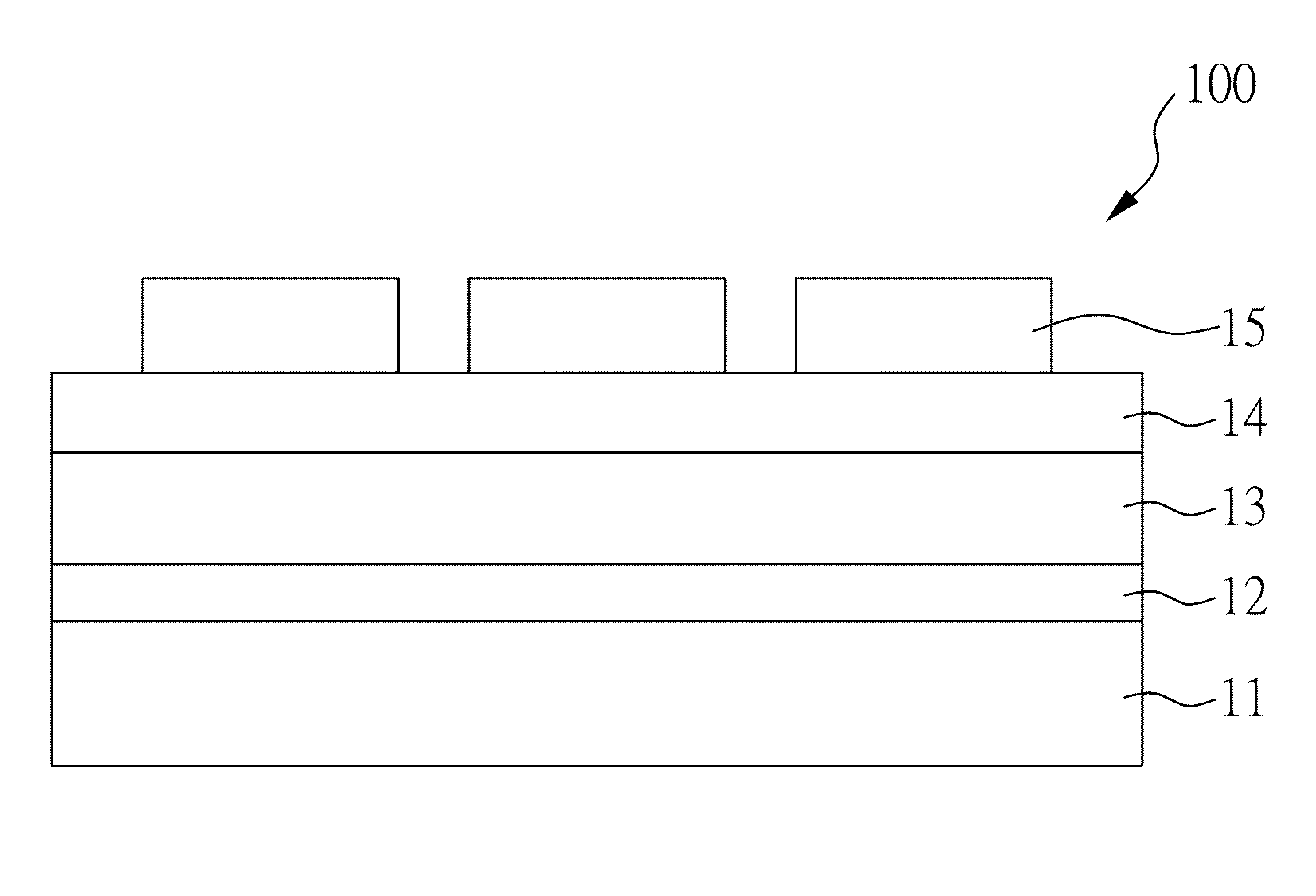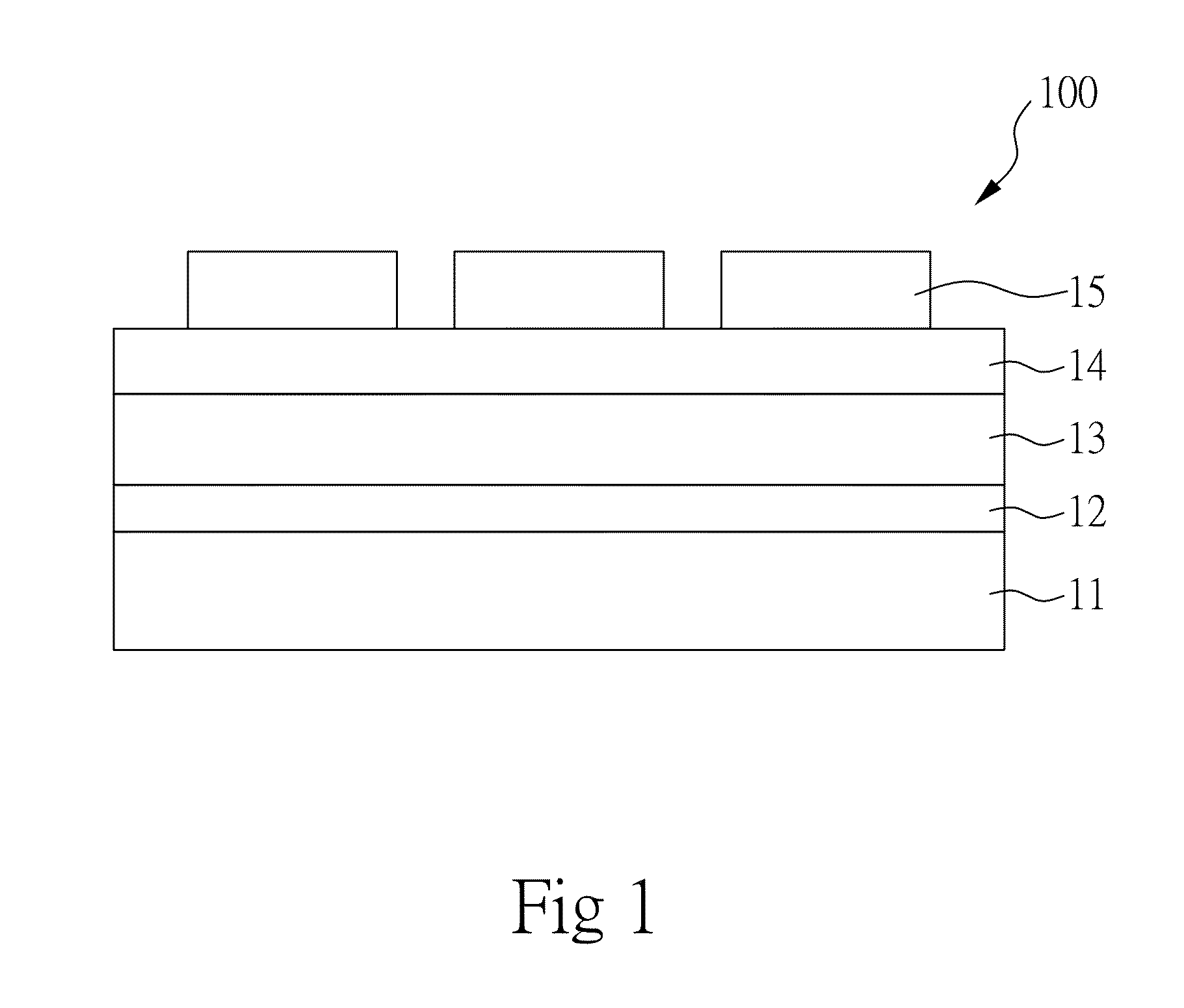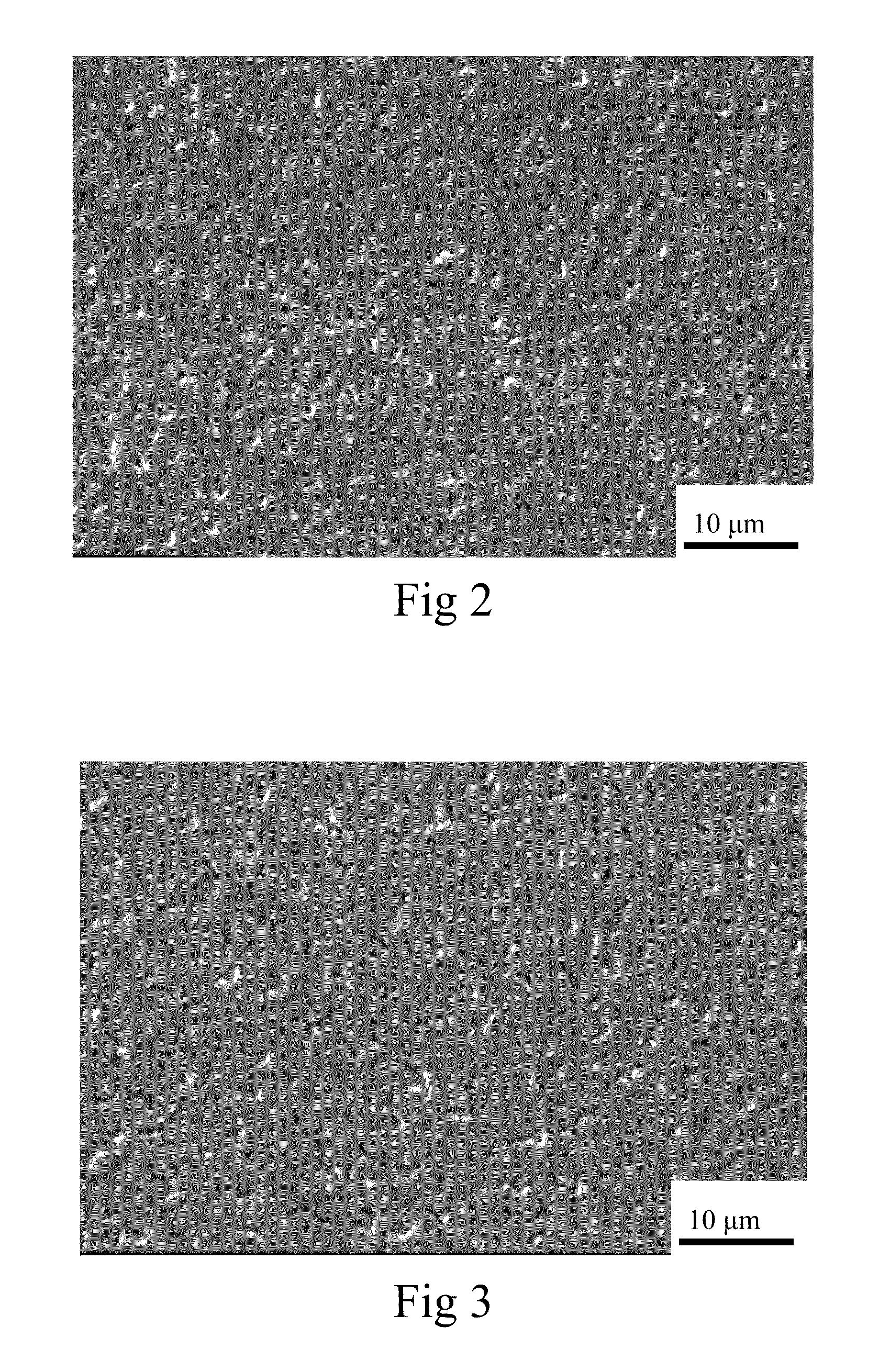Perovskite solar cell
a solar cell and perovskite technology, applied in the field of perovskite solar cells, can solve the problems of poor electron transfer efficiency, difficult solar cell popularization and large-scale application, and high production cost, so as to improve the coverage enhance the photoelectric conversion efficiency, and reduce the roughness of the perovskite material layer
- Summary
- Abstract
- Description
- Claims
- Application Information
AI Technical Summary
Benefits of technology
Problems solved by technology
Method used
Image
Examples
example 1
[0033]First, 0.399 g of methylammonium iodide, 0.233 g of lead chloride (PbCl2), and 6.32 mg of polyethylene glycol (1 wt %) (molecular weight: 6000) were dissolved in 1 mL of dimethyl formamide (DMF), and uniformly stirred at room temperature to prepare a perovskite material precursor. Then, a solution containing TiO2 nanoparticles was prepared using a solvent of 2-methoxyethanol, and the content of TiO2 nanoparticles was 10mg / mL Furthermore, 80 mg of spiro-OMeTAD, 28.5 mL of 4-tert-butylpyridine and 17.5 μL of Li-TFSI solution were dissolved in 1 mL of chlorobenzene to prepare a solution comprising spiro-OMeTAD.
[0034]Next, a FTO substrate was used as a first electrode substrate, and the above solution containing the TiO2 nanoparticles was spin-coated (3000 rpm, 40 seconds) on the FTO substrate, followed by a thermal treatment at a temperature of 150° C. for 30 minutes, to form the TiO2 layer as an electron transport layer. Then, the above perovskite material precursor containing 1...
example 2
[0037]The perovskite solar cell prepared in this example was substantially the same as in Example 1, except that in the perovskite material layer, 3 wt % of polyethylene glycol was included as the polymer additive. In this example, the prepared perovskite material layer was shown in FIG. 3, and it can also be observed that the perovskite material layer had a very excellent coverage.
PUM
 Login to View More
Login to View More Abstract
Description
Claims
Application Information
 Login to View More
Login to View More - R&D
- Intellectual Property
- Life Sciences
- Materials
- Tech Scout
- Unparalleled Data Quality
- Higher Quality Content
- 60% Fewer Hallucinations
Browse by: Latest US Patents, China's latest patents, Technical Efficacy Thesaurus, Application Domain, Technology Topic, Popular Technical Reports.
© 2025 PatSnap. All rights reserved.Legal|Privacy policy|Modern Slavery Act Transparency Statement|Sitemap|About US| Contact US: help@patsnap.com



